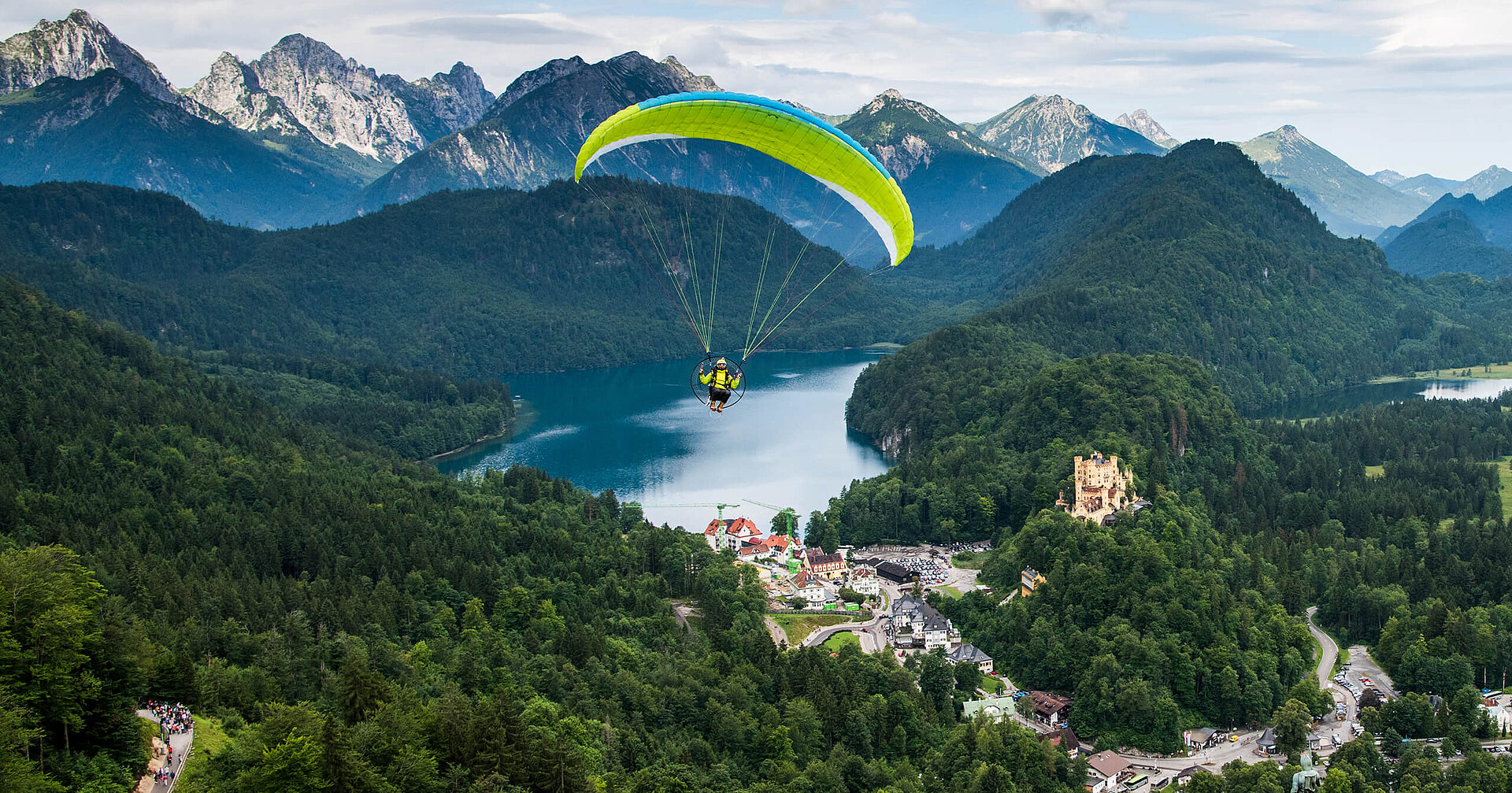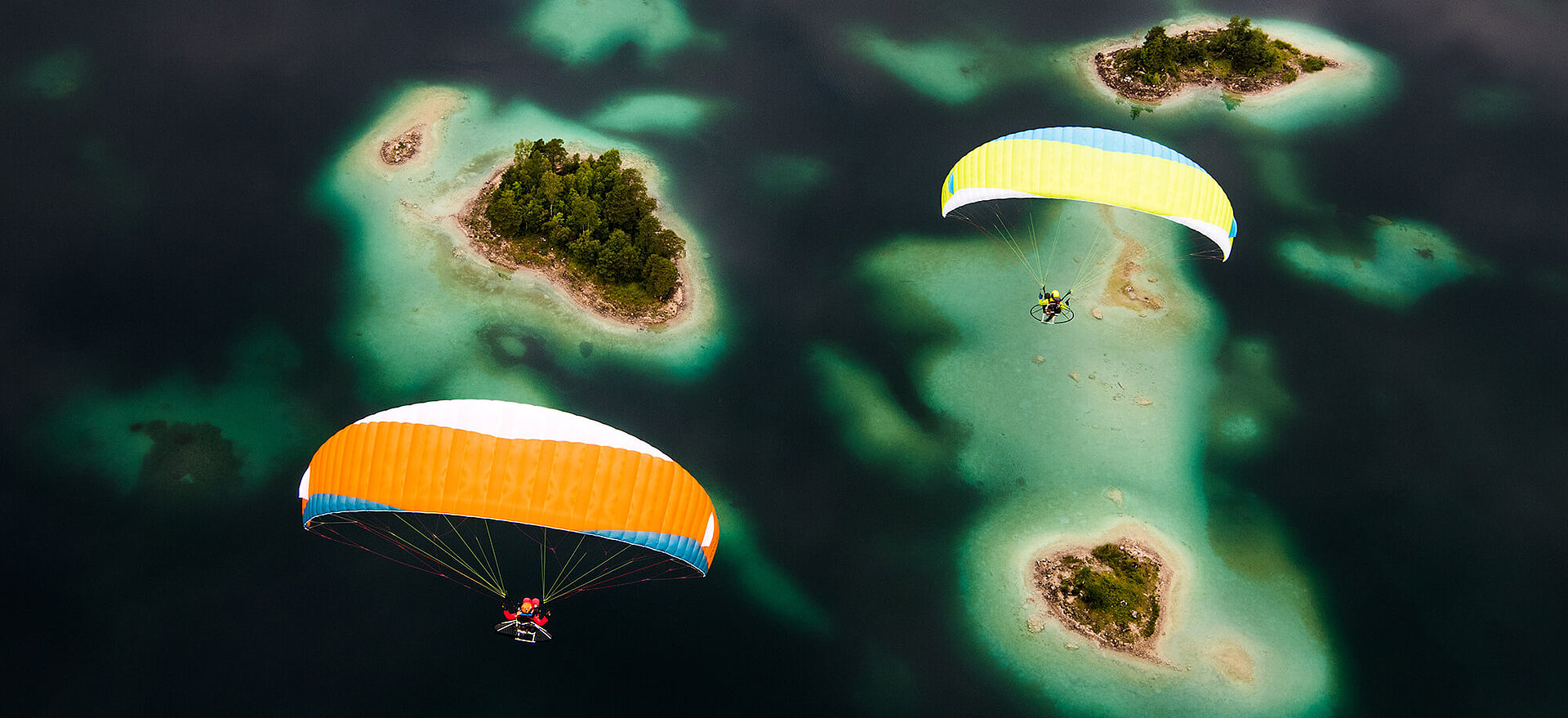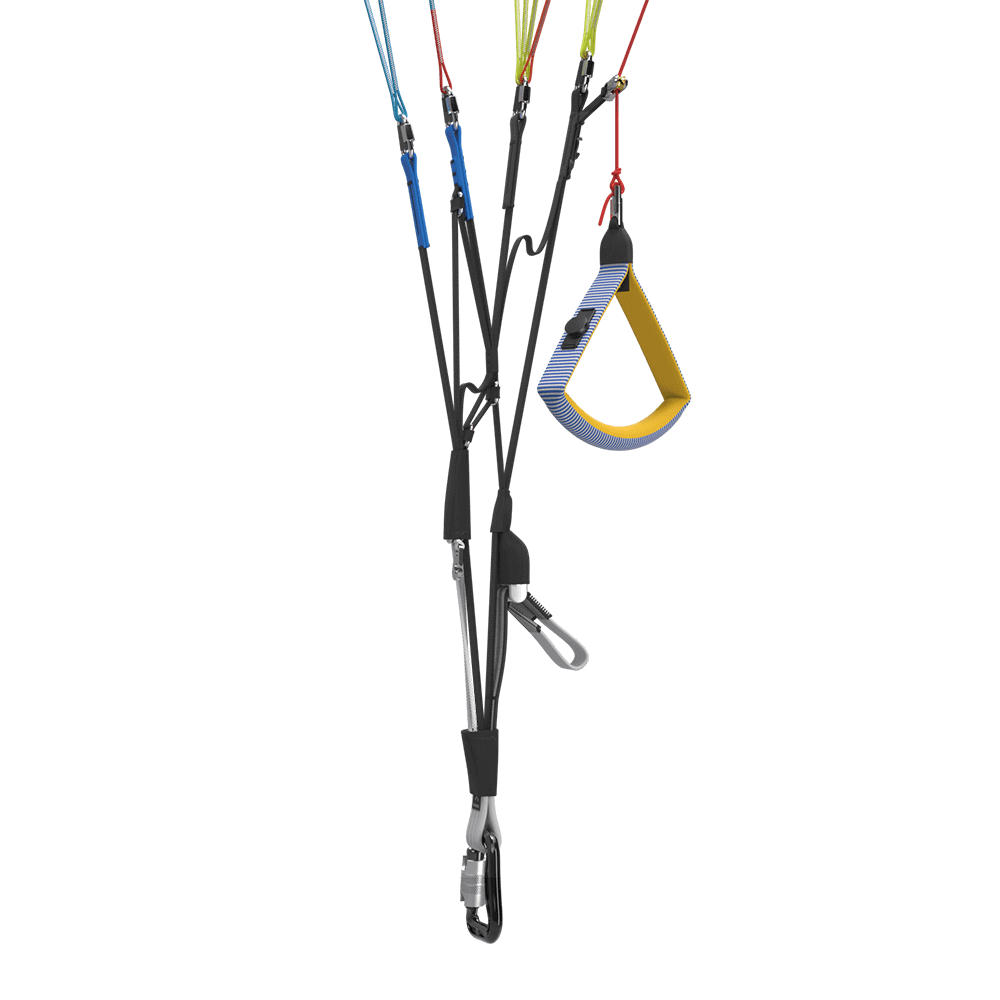Adi Geisegger from the Allgäu had toyed with the idea for some time: some day to connect the most beautiful mountain lakes in the Allgau, the Tirol and Upper Bavaria triangle in a single flight. No problem with the paramotor, some free fliers may think. With 140 kilometers total distance on only one tankful, complicated valley wing systems and few landing possibilities this is, however, a special kind of adventure. Adi reports …
The actual plan
The Agathazell airfield, near Sonthofen in the Allgäu, was awoken at first light when we warmed up our engines before takeoff. At this early hour cold and steady mountain wind prevailed; this means super takeoff conditions for us. Even though our tanks were filled to the brim we lifted off without problem after only a few steps.
Our plan was to fly with the west wind at low level over the Tannheimer valley and the Haldensee into the Lech valley, and from there past Reutte and the Plansee direct to the Eibsee at the foot of the Zugspitze. The route goes in front of the rock faces of Germany’s highest mountain, then back to Reutte with the high level east wind, from there to the fairytale castles of Neuschwanstein and Hohenschwangau, over the Alpsee as well as the Forggensee near Füssen to Agathazell again.

Quick decisions called for
But it worked out differently. The cold air flowing out of the mountains, normally a shallow layer only a few hundred meters thick, reached almost up to 1500 metres! Accordingly our groundspeed hovered in the single figure region. Stubborn minutes passed. At last we emerged into a different airmass. The west wind now carried us quickly away over the Tannheimer valley and the Haldensee into the Lech valley. Even at low level we are now swept forwards. We reach Reutte in the Tirol and fly direct towards Plansee, the critical point of the project. This valley, which contains the Plansee, is narrow and thickly wooded, there’s hardly a landing possibility on the shore. But we risk it.
And had to turn back unexpectedly. A low cloud bank barred the route ahead from the Plansee to the Eibsee! It must be Plan B. Without further ado we divert to the Heiterwangersee, past Leermoos and Ehrwald to get to the Eibsee; well aware of the extra fuel needed, thus risking our project …

A bit of luck
But the valley wind is on our side. At 70 km/h some of the way we are faster than the countless holidaymakers in their cars under us. Far below the Eibsee finally emerges. A veritable waterscape, the colours looking surreal, the clouds reflected in the mirror surface of the lake.
Eight small islands glow – set against the shallows aound their shores – turquoise green in the otherwise dark blue surrounding water. Their origins lie 3,400 years back. During a landslide, giant boulders crashed into the water. The estimated energy released was equivalent to 2.9 megatons of TNT.
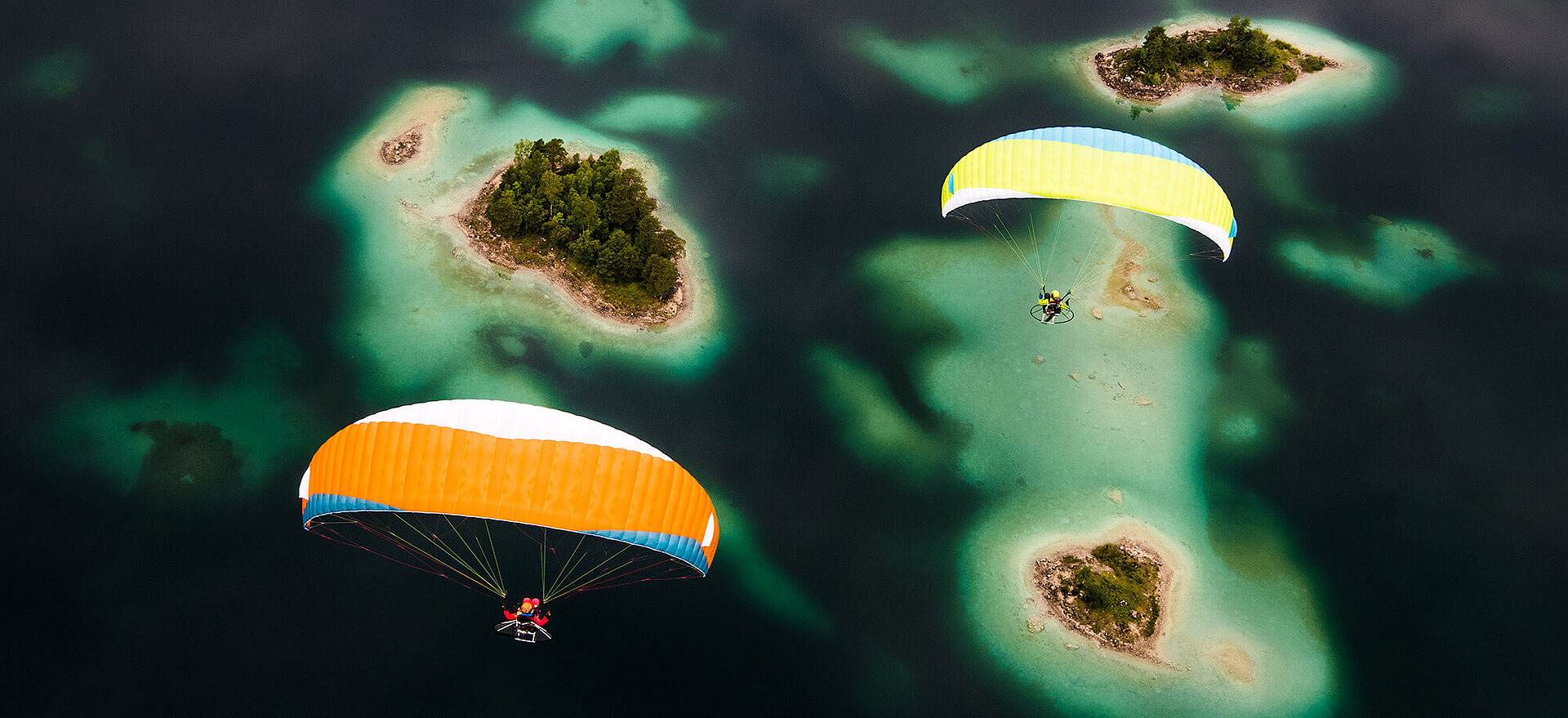
The fairytale Neuschwanstein castle in focus
After two flyovers this episode is abruptly at an end. A look in the mirror at the tank shows only 4.2 litres remaining – high time to be turning round! The way back will take a good two hours. We make some height and rejoice: the view over the Plansee is free! The clouds have dissolved. Our hopes climb: perhaps we can reach Reutte using minimal gas in the high level easterly flow, and continue towards Füssen to our last two lakes – the Alpsee with the famous Neuschwanstein castle and the emerald Forggensee.
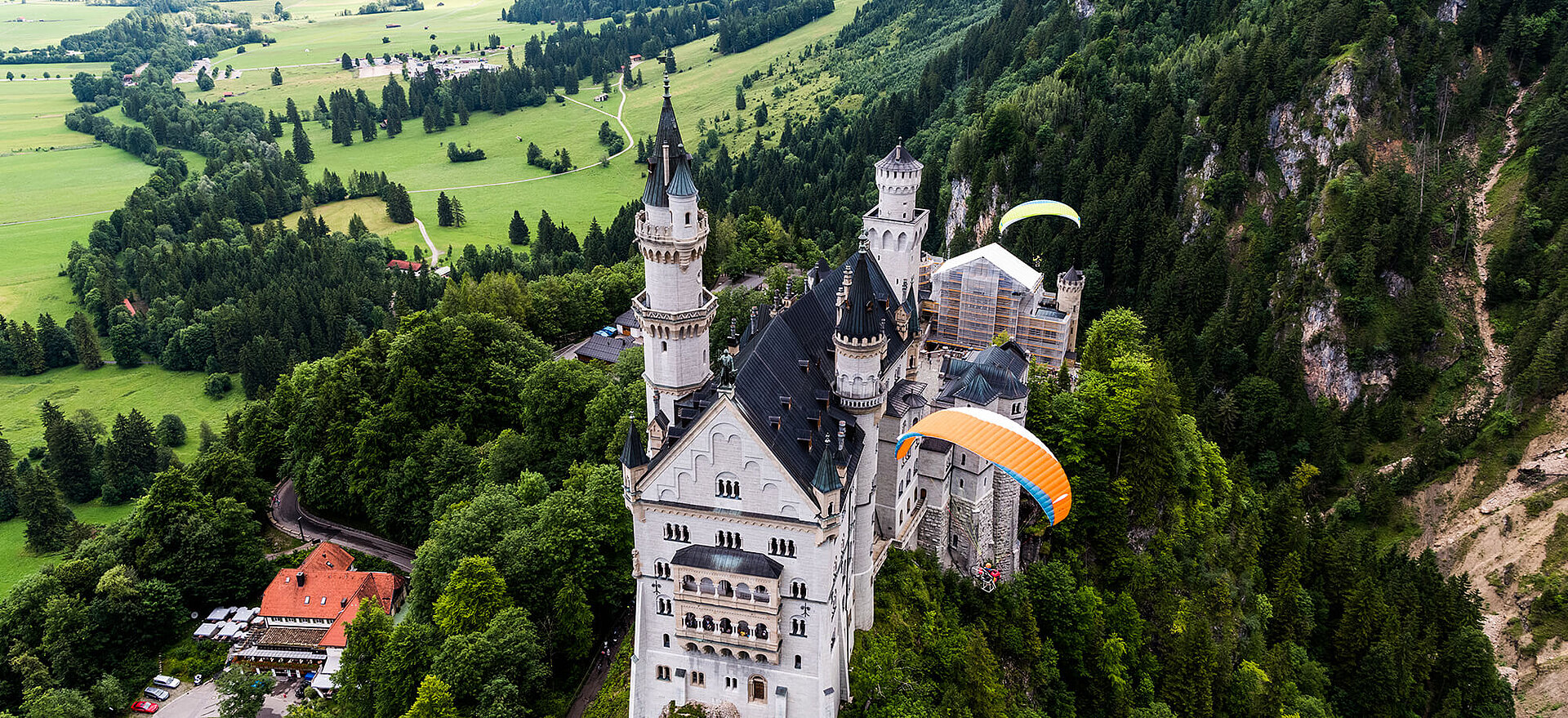
Without thermal help it won’t work
Form here the vario’s time to destination still shows one hour’s flying required. Into the west wind with a groundspeed always below the 30 km/h mark, with only 2.5 litres of petrol left it could just about …
However, the weather gods are with us. The sky brightens up and thermals help us save some fuel. With climbs of up to 4 m/s we glide part of the way back to the airfield with idling engines. We have the overwhelming feeling of having awoken from a dream.

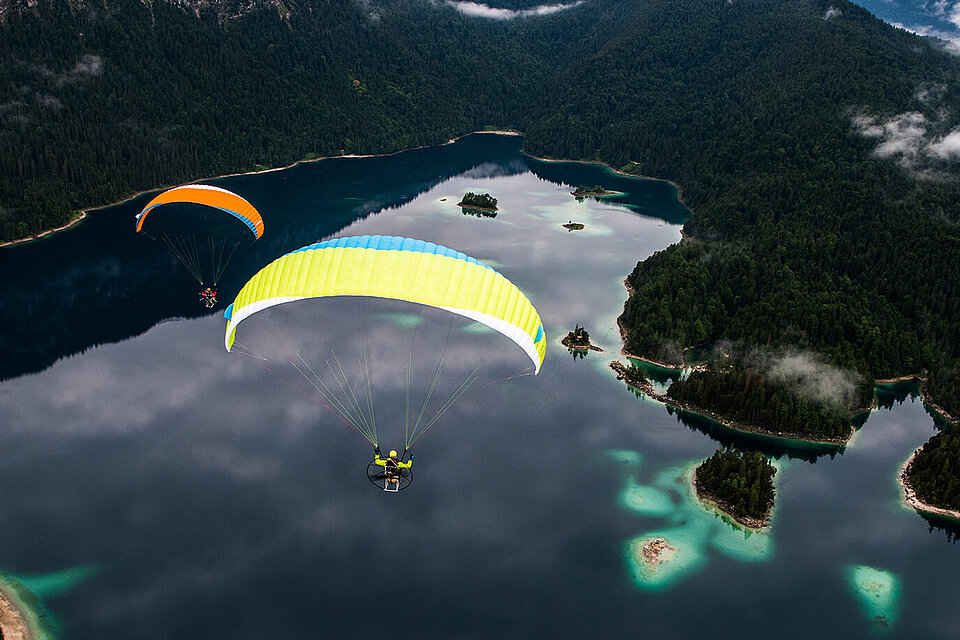



The Equipment
The Route
From Agathazell airfield in the Allgäu over the Tannheimer valley with the Haldensee into Lech valley. From Reutte over the Heiterwangersee as far as the Eibsee at the feet of the Zugspitze. Over the Plansee, past Schloss Neuschwanstein and over the Alp- and Forggen lakes back to Agathazell. (140 km, approx. 5 hr in the air)
The route is not straightforward for the paramotor. At this time of year the valley wind systems are very pronounced, and need much experience for arriving at a valid judgment of luff- and leeside. Adi and his team made use of these winds in order to cover the distance in one flight – without having to land on the way.
